So many conferences are mid. Why was BSC 2025 so good?
Last month I attended one of the best conferences I’ve ever been to: Better Software Conference 2025. I wasn’t alone in my feelings about it — for many attendees, it was the best conference they had ever been to. Yet incredibly, it was organized by a trio of three Scandinavian guys in their early 20s without much prior experience.
Why was it so good?
Most of us have attended our fair share of mid to disappointing conferences, but BSC 2025 did a number of things to buck the trend. I think there are some lessons to take away from how it was organized; I’ve condensed my thoughts below.
But first, some context. BSC is a new conference. What is it even about?
With each passing year, a lot of software in the world is getting worse. Think Google search, which is more terrible than ever; or how seemingly every major website is cluttered with cookie preference popups (not to mention sign-in popups); or that some offline applications that worked great a decade ago now have no offline version and contain intrusive and unwanted AI “features”. In short, software is in decline.
A motivation of Better Software Conference 2025 was the desire to make software going in the opposite direction to this trend. That is, to make software that is actually good.
The conference was a coming together of people passionate about making quality software. Many of the projects attendees worked on were created from scratch in C, C++, Jai, Odin, Rust, and Zig. We shared our insights with one another, discussed problems in the field, and made friends.
Attending BSC 2025 was a blast. And I think this was due to some of the atypical ways the conference was organized.
1. The talk schedule was extremely flexible
The best talks of the conference were also the longest, at 2.5 hours and 2.75 hours respectively. (Including Q&As.) At risk of stating the obvious, at a traditional conference the idea of even a keynote speaker giving a talk this long is inconceivable.
Yet Casey Muratori and Andrew Reece delivered these talks with such a huge number of insights that it would have been all but impossible to fit everything into a 60 minute timeslot. The idea of them dropping these details to meet an arbitrary time limit feels sacrilegious.
Many of us have watched great talks where the speaker was forced to cut things short because their timeslot was over. At BSC there were NO strict time limits, and talks were all the better for it. Speakers could take as long as they wanted; no one was cut short nor rushed.
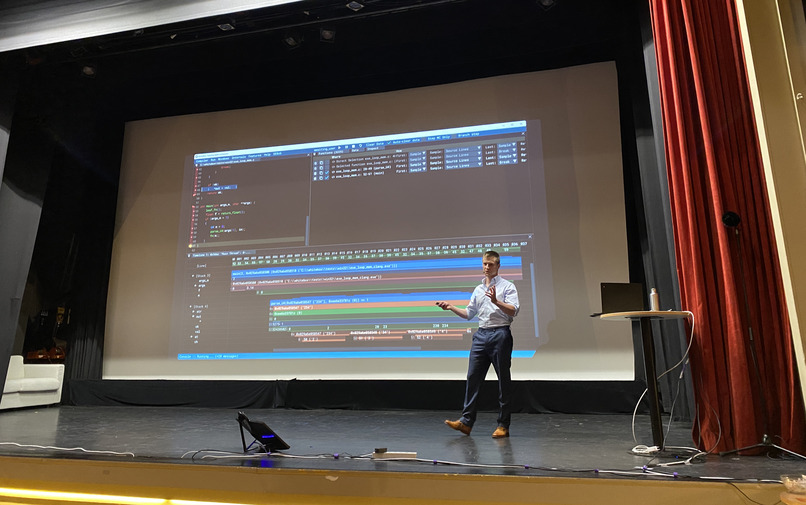
Andrew Reece’s talk was nearly as long as “Oppenheimer” but was more satisfying.
2. Everyone slept in the same hotel, and got meals together
At most conferences I’ve attended, people stay at different hotels, and often get meals like breakfast alone. Not at BSC.
Together with its rural location, staying in the same hotel while getting breakfast, lunch, and dinner together gave the conference a “summer camp / reunion” vibe. It was so good! We had saunas, swam in a nearby lake together, and some of us even sparred on the lawn. Multiple times.
Often when attending a conference, I end up heading back to my hotel alone, which can feel isolating, but this didn’t happen at BSC. Instead, socializing happened from breakfast until midnight (and then often past midnight).
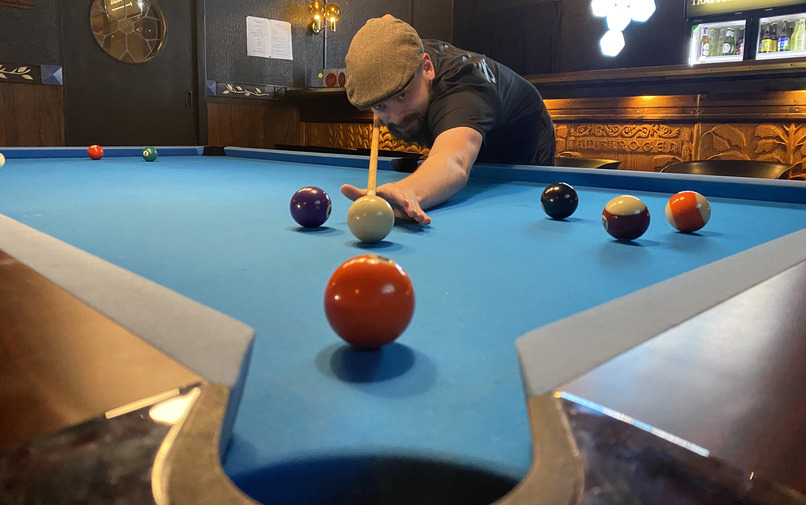
Playing pool was on the tamer side of our recreational activities.
3. The conference was bookended by rest days
I’ve attended loads of conferences where I fly in on the first day in the morning, and fly out on the last day in the afternoon. It always sucks and I hate it.
BSC 2025 did something way better. An entire day was dedicated to taking the train to the conference — itself quite a beautiful ride — and then the subsequent day was dedicated to catching up on sleep. Only on the day after that did the talks actually begin.
Naturally, everyone socialized over these rest days, which made the start of the conference great fun.
As someone who’s working on a puzzle game, these rest days were particularly beneficial. I was able to playtest my upcoming demo a lot! A queue of playtesters quickly formed, which I sadly I didn’t get to the end of. Note to attendees: if you wanted to play the demo but didn’t get to, please ping me in the Discord next month and I’ll organize something.
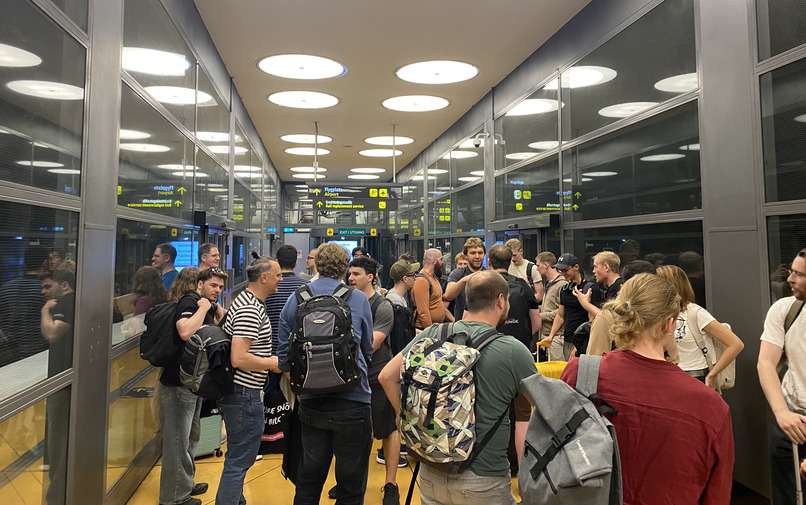
Object-oriented programming evangelism was left behind at the train station.
4. The AV crew knew what they were doing
I find it completely ludicrous that at many conferences with bajillions of corporate sponsors and ticket prices in the quadruple digits, talk recordings can be merely decent at the best of times. And even though virtually every monitor today has a refresh rate of at least 60 Hz, most conference recordings do not offer video in 60 FPS.
By comparison, despite having NO corporate sponsors, and a three-digit ticket price that also included six nights accommodation, all meals, and train tickets to / from the airport, BSC 2025 managed to have excellent talk recordings. (And they are, of course, available in 60 FPS.)
Watching the talks live, I don’t remember there being any significant issues with the microphones. I think there was a singular case of some weird HDMI issue that got fixed within a minute. All in all, the AV crew were excellent.
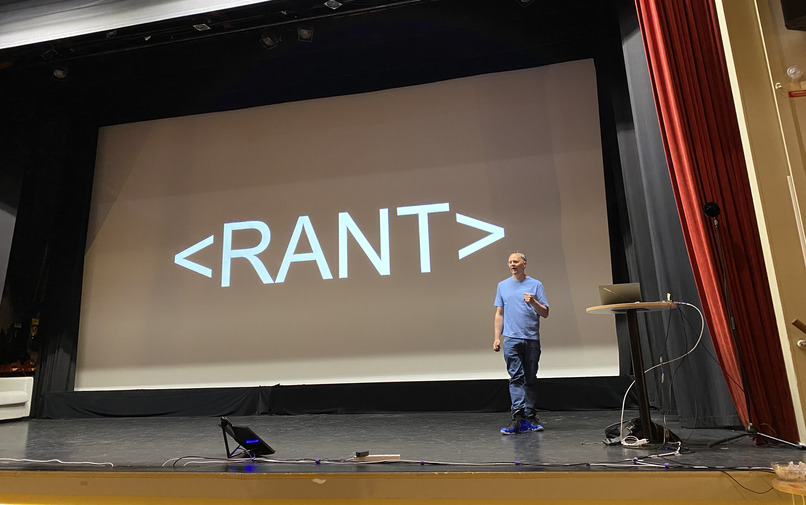
The AV crew knew how to make the most of the conference’s talks and rants.
5. The number of attendees was relatively small
Typically when I arrive at a conference, I don’t know the majority of attendees. Rarely does this change by the time I leave.
By contrast, at the end of BSC 2025 I knew more than 90% of people’s names, and I’d like to think I had a decent idea of what they were working on too.
Doing this would have been difficult if BSC had even 100 attendees, and impossible at higher orders of magnitude. I think the conference was within a “Goldilocks” zone in terms of the number of attendees. I know some conference organizers rely on the economies of scale that come with huge gatherings, but there’s an argument to be had for more conferences of BSC’s size.
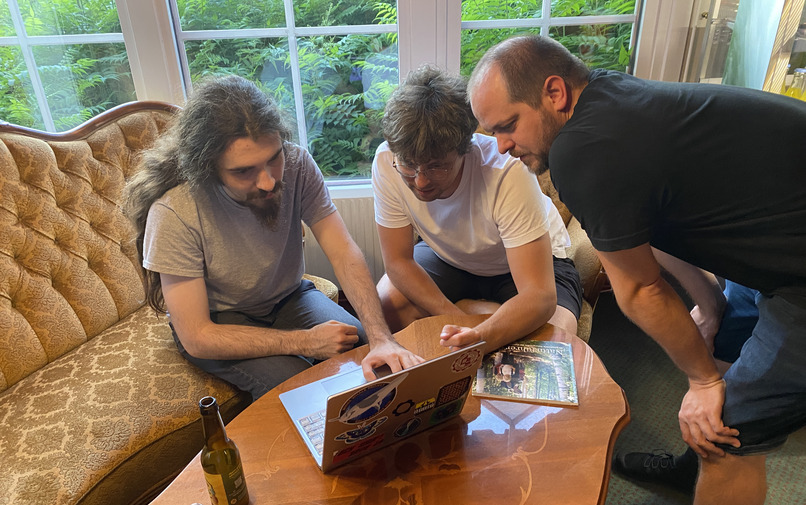
Despite having a small number of attendees, I playtested my demo at BSC more times than at any other conference.
6. The caliber of attendees was very, very high
I doubt I’m alone in thinking that it’s the attendees more than any other factor that influence how good a conference is. BSC 2025 punched significantly above its weight in this regard.
There were C/C++ titans by way of Casey Muratori and Eskil Steenberg. There were creators of much needed software such as Vjekoslav Krajačić of File Pilot, Ryan Fleury of the RAD Debugger, and Andrew Reece of Whitebox. There were developers of ambitious projects that had recently shipped, such as Dennis Gustafsson of Teardown and Sam H. Smith of the Serenum computer.
Basically everyone knew what they were doing. But the conference wasn’t all work and no play.
On the third (and essentially final) day of talks, after we had swum in the lake, some attendees decided to flex give us a calisthenics demonstration. As I watched Andrew and Jose do handstands on rocks by the lake, I couldn’t help but feel that what they were doing was representative of the conference as a whole: technical and inspiring, yes, but a whole lot of fun too.
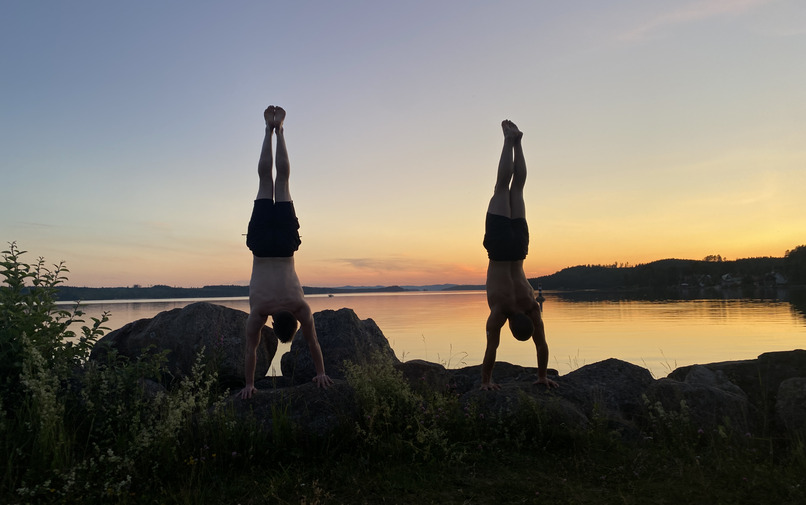
Andrew and Jose brought new meaning to the aphorism “Be the chad you want to see in the world.”